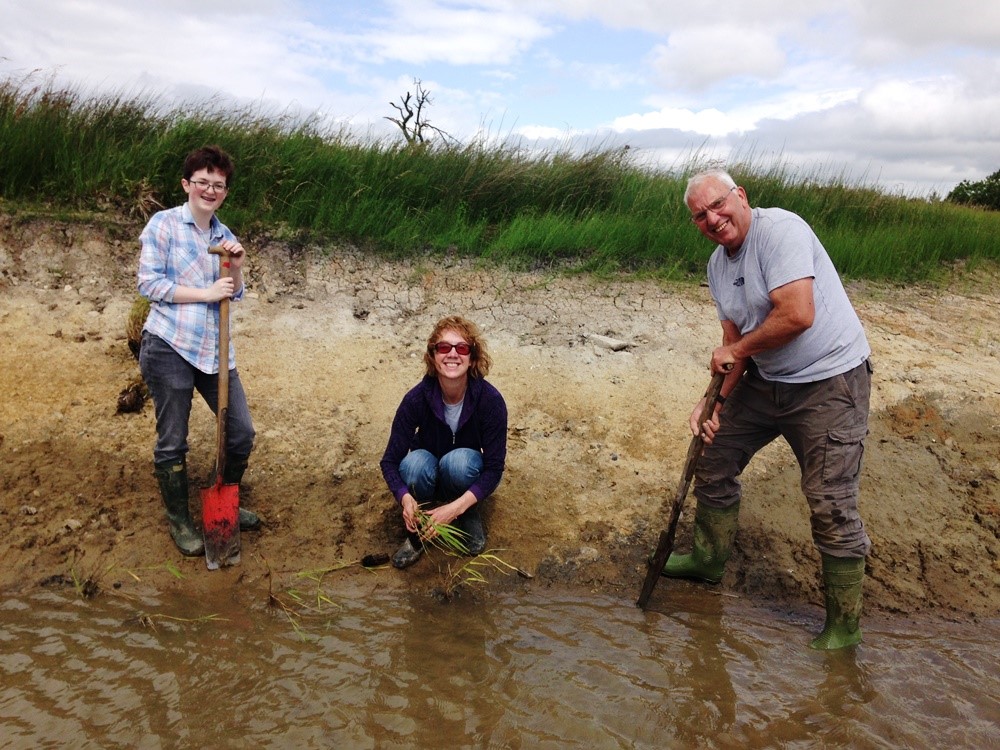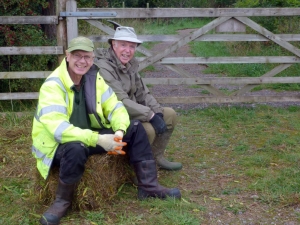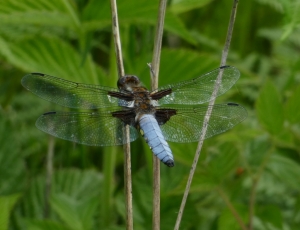Blog Archive (28) Posts Made in April 2015
Team Thursday and Some Good News
Thursday, April 30th 2015
Volunteers have been busy on the reserve again completing a variety of jobs. Mike and Matt could be found in the workshop servicing and making a small repair to one of the mowers.
Our wormery also received some much needed attention today. Once this was taken down from the stand at the outdoor classroom we emptied the soil, sand and stone and gave it a good clean.
We then gave it a fresh coat of paint to provide some protection over the coming year. The wormery will be filled again with layers of gravel, to help drainage, sand and soil. This fantastic educational resource helps children to see and understand the importance of some of the minibeasts they discover as we search for them on activity mornings.
Tony could be found out and about on the reserve this morning continuing with the maintenance work on the system of pipes and drains under the network of paths that cross the reserve. During the afternoon he undertook the stock check for us, making the job of cashing up easier.
We have also received good news from Jacky, our fundraiser. She found out earlier in the week we have been successful with a substantial grant application to help fund a new section of boardwalk and viewing platform beside the lake. This will overlook the newly worked area where a short grass sward will be maintained to encourage duck and other wildfowl to feed. Well done Jacky, we are very grateful for your efforts!
Wildflower Walk
Wednesday, April 29th 2015
Today was the monthly wildflower survey at Foxglove. This meant eight volunteers braved the icy winds and dodged the showers to carefully hunt around the reserve and produce a list of all flowering plants seen. This survey is conducted monthly and provides us with a valuable and up-to-date record of the species we have on the reserve. This allows us to see changes through the year and from year to year. As spring progresses, so does the number of species flowering at Foxglove. Today we identified 36 species.
The Blackthorn bushes are now looking very pretty and providing a supply of nectar for hoverflies and bees.
A Flowering Currant bush was found, adding a splash of vivid colour to the reserve.
The Cowslips are flowering beautifully at present, filling the grassy banks with their little yellow heads.
Greater Stitchwort, with its five-petalled flowers, was seen for the first time this year. As they ripen, the seed capsules of these small white flowers can be heard popping later in the spring.
Thank you very much to everyone who gave their time this morning, sharing their knowledge of flowers to help complete the list.
Tree Care
Tuesday, April 28th 2015
Today we had fourteen hard working volunteers out completing some after care on trees that have been planted in the past here at Foxglove.
This involved pulling up the tree guards and removing any vegetation from around the base of the tree and then replacing the guard and straightening any wonky stakes.
We also removed a few trees that had unfortunately died, however completing this vital work on a yearly basis gives the trees the best chance of reaching maturity.
Due to the hard work of our team of volunteers today we got through a large section of trees around the bottom of the lake. We would like to thank everyone who braved the sleet and hail to complete this task today.
Welcome
Monday, April 27th 2015
Stacey was welcomed as part the team on the reserve for her first day today; she has joined us after finishing her contract with the British Antarctic Survey where she was surveying penguins. Stacey will be working here during the busy summer months, assisting in all aspects of life on the reserve. Already she has been working hard alongside the reserve managers dealing with a dangerous tree and repairing this dam along Risedale Beck. We hope that you enjoy your time at Foxglove.
A Greylag Goose has been sat very patiently on her nest in the scrapes for the last four weeks. Visitors found that the eggs had hatched and were delighted to see six goslings swimming on the ponds and later on the lake.

Spring Flowers
Sunday, April 26th 2015
After the long months of winter the reserve is now changing colour. There are yellow flowers to be seen including Primroses and Lesser Celandines. To many people Dandelions are weeds but they are giving a lovely splash of bright yellow around the reserve.
They also provide food for our early butterflies, like this Orange Tip.
Common Dog Violets are growing everywhere and can be found in the orchard on the way to the wetland hide as well as along the edges of the boardwalks and in the corners of steps. Some flowers are fading and setting seed.
Cherry trees are in bloom.
Yesterday the Bird Cherry trees along Risedale Beck were examined for insect life. Not a flower was spotted. (Unless we were all unobservant!) However the trees near the Grand Fir are in bud.
These tiny Forget-me-nots were found in flower in the Scrapes.
Eco Club
Saturday, April 25th 2015
The weather is often mentioned on the blog, with words ranging from wet, misty, hot, cold, snow and sunny to mention just a few. Today 'the weather' had obviously realised that it was the weekend and so changed from lovely and warm and sunny to cool, windy and a hint of rain. Wrapped up warmly and armed with dishes and spoons, a white sheet and magnifying glasses Eco Club set off to look for minibeasts.
Conifer trees were shaken, little ones
and large ones.
There were not many invertebratres around in the conifers but we did see some greenfly, a pine Weevil and a 7-spot Ladybird.
Our next tree to be shaken was the Bird Cherry.
A tiny snail, another weevil and some flies were caught.
We then headed to the outdoor classroom to look under the logs.
The catch here was a little more interesting. A Smooth Newt and a Common Toad were found. Slugs, earthworms, woodlice and some millipedes, one of which was rather long with lots of legs, were gently placed in dishes so that they could all be looked at carefully. They were returned to their logs before we headed back to the centre for a thaw!
Thank you to everybody who helped today. Thanks to Glennis for taking the photographs.
Later in the day the rain arrived, as forecast. Two Greylag Geese were sitting on the duck field. You can just see a hint of green as the vegetation begins to grow.
These four male Mallard did not appear to be impressed with the rain.
Stoneflies
Friday, April 24th 2015
Stoneflies are a widespread group of invertebrates, found in most streams and rivers around the country. The adults live for about 20 days and are frequently found flying near vegetation alongside streams.

The image above was taken by Neil in October last year as he surveyed Risedale Beck. This naiad is the juvenile phase of the stonefly lifecycle and can take up to 3 years to develop into an adult. They ecdyse (shed their skin) up to 35 times during their development and when ready to emerge as an adult climb out of the water onto a rock or branch to shed their exoskeleton for the last time.
Stonefly exuviae were seen in large numbers on the section of willow spiling; after we had spotted these we noticed many adults were flying over and near to the beck.
Nest Boxes
Thursday, April 23rd 2015
Some of the ringing team were out last night to make a start checking the Tawny Owl and Kestrel boxes that we have around the training area.
During the evening we visited six boxes; two Tawny Owls were found on eggs, and a Kestrel nest containing six eggs. One of these owls was first ringed in 2006, and this is the sixth year she has been recorded nesting in one of our boxes. We will revisit the nests once the eggs have hatched and the chicks are large enough to ring. The eggs below are from one of the Tawny Owl Nests.
The next few months will be a busy time for the bird ringers with CES sessions starting at the beginning of May and many evenings out checking all of the nest boxes.
Thank you to everyone who was involved with this last night.
Bits and Bobs
Wednesday, April 22nd 2015
Earlier in the week volunteers were scouring our wild flower meadow in search of Yellow Rattle. We planted and seeded Yellow Rattle through this area last year as part of our efforts to improve the quality of the meadow. Yellow Rattle is a valuable flower to have in a meadow as it is semi-parasitic on some grasses, helping to reduce their dominance in the sward, allowing for a more diverse flora to develop.
After a short while searching, leaves of Yellow Rattle plants were found in several areas. This is a real success story and makes all of the hard work last year worthwhile.
In other floral news, the first Bluebell flowers were spotted this morning as we walked beside Risedale Beck. It will only be a matter of weeks before areas of the moorland, woodland and Hazel banks are transformed as more of these flowers bloom.
Tony has been working hard, cleaning many of the drainage pipes out. This work is very important as it helps to keep the paths free of running water and prolongs the life of the path surface. Thank you very much for your efforts in this task today.

Spring Cleaning
Tuesday, April 21st 2015
Our volunteers were hard at work again today as we cleaned all of the bird feeders that are hung around the reserve. After collecting them in, they were carefully taken apart and given a good scrub.
The glorious weather made this an enjoyable task, with everybody chatting and joking as we worked. It is important to regularly clean feeders as dirt and dust from the seed can build up; this can cause seed to rot in the feeders and may harbour disease such as Papillomatosis which is sometimes seen in Chaffinches. To minimise the chance of transmission the feeders are often cleaned and rotated around different positions on site.
The warm weather helped to dry the feeders quickly, so they were back with birds feeding before lunch.
During the afternoon volunteers helped us to give the workshop a tidy before heading down to our wood store at the bullet catcher to help us sort and organise everything down there – a mucky job, but definitely worth the effort!
In other news, the lawn has been re-turfed today, repairing the damage caused by the articulated lorry last month. The area is now looking really smart and will be even better when the paving slabs are laid later in the week.
As always, we are very grateful to everyone who has helped us with these jobs.
Girls’ Names Quiz Results
Monday, April 20th 2015
Congratulations to Michael Fenwick who is the winner of the English Towns Quiz - the winner was drawn from a hat from the entrants who scored full marks.. Congratulations also to The Coopers who scored full marks. Other scores are as follows: 35 - Mrs. Byers and Emma, 33 - The Darwins, 32 - The Halls and The Bacons, 31 - Mr. Hird, and 30 - Mrs Stott.
Below are the questions and answers for the quiz.
- She is able to mix easily - Isabel
- I went to Seoul to see her - Louise
- Goddess of the moon - Diana
- Is she Celia's twin? - Alice
- Is she named after the Red City? - Petra
- She's the same which ever way you view her - Hannah
- A European country gets in amongst her - Francine
- Mrs Punch - Judy
- She could go down a leadmine - Madeline
- Does she do little, the lazy girl? - Eliza
- Her proper name is Bellis - Daisy
- She lives next door to Florence (and speaks the same language!) - Siena
- First published in 1815 - Emma
- Do you fancy afternoon tea here? - Betty
- The plane surrounds the indefinite article - Janet
- Her other name is Erica - Heather
- If you called her by another name she would still smell as sweet - Rose
- Quite a contrary lady - Mary
- A faint light surrounds the OT prophet - Aurelia
- She can be mixed up in New York - Nancy
- The mart has her in - Martha
- I wish to visit parts of Transylvania - Sylvia
- This is a stinker of a clue! - Kristen/Kirsten
- Did she catch an eel? - Lee
- She'd span the river to a t - Bridget
- Abandoned by Theseus - Ariadne
- A little woman - Beth
- Some kind of aural mix-up here - Laura
- Her name suggests elegance and beauty of form and movement - Grace
- She has a mineral deposit in her den - Doreen
- Donkey or Spinning - Jenny
- She is adamant there is no t - Amanda
- She mixed up the sail - Lisa
- Reigned from 1819 to 1901 - Victoria
- In the sky with diamonds - Lucy
- I bumped into Kate - Katie
Thank you to Pat and Glennis who have once again compiled and marked this quiz for us. It has been very successful, raising over £100 for the reserve! There is already another quiz in the pipeline which will be released shortly.
Whitebeam
Sunday, April 19th 2015
One of the aims of the volunteers who 'do' the flower walk is to improve their identification of trees at all times of year. Books are poured over and twigs, buds, leaves and flowers are examined and we are improving. It does help that trees do not get up and move around! The test is then to ID any new trees poking through tree tubes!
One tree 'learnt' last year was Whitebeam and it is still in the same place as it was last year, now with leaves just bursting their buds.
The flowers are still tightly closed.
Next on the list is Norwegian and Field Maple.
The bird ringers caught over 120 birds today with some interesting birds that had been ringed before ie retraps. There was a Chiffchaff that was 4 years old. These tiny birds weigh less than 10g and fly thousands of miles during their migration flights. Chiffchaffs have been heard singing around the reserve for some time now but the Willow Warblers were only heard last week, several returning migrants born here in previous years were caught today as well as five new birds.
A pair of Willow Tits was also caught today. The female was 8 years old and has been caught 36 times since first being ringed in 2007. She had a large brood patch and is definitely breeding on the reserve. This is an amazing age for another of our resident birds. The data shows the importance of the information that is collected during ringing. Our data base contains many tens of thousands of records and we can access data on retrapped birds almost instantly.
Other birds caught that were not so young included a Chaffinch at six years old, a Blue Tit at 8 years old and a Great Tit at three years old.
The reserve was very busy today and thanks go to everyone who helped.
More Spring
Saturday, April 18th 2015
Out looking for Early Purple Orchids a Cowslip was spotted in a place where it had not been seen before. Great excitement! Photograph taken. Then rather quickly common sense prevailed, it was a Primrose that had been nibbled!
However further around the walk Cowslips were spotted and in flower, where they should be!
Almost each day something new is to be seen as spring progresses. The leaves of Marsh Marigold had been recorded, but no flowers. Then suddenly the buds had opened and the bright yellow flower could be seen in all its glory.
One flower that may not make it into the April flower list is Bluebell, although this one is quite close.
Dippers
Friday, April 17th 2015
Dippers are one of the first birds to nest, building and laying their eggs early in the spring. Today we visited four potential nesting sites under bridges around the training area. At two of these we found nests both containing five eggs.

A Dipper nest is a domed structure of moss, grass stems and leaves, with a wide entrance usually pointing down towards water. There is an inner cup of stems, leaves and hair. It is built by both males and females over a few weeks, with the female completing the lining to the inner cup. The birds may return to the same nest several times during the breeding season.
We will be going back in just under two weeks when hopefully the chicks will have hatched and be large enough to ring. On the reserve, signs of the approaching breeding season can easily be seen as you are walking around: summer migrants can be heard singing, many species can be seen collecting nesting material, and a Blue Tit has taken up residence in our camera box.
Differences
Wednesday, April 15th 2015
Some of the black stems of Blackthorn are now covered in white flowers. This is an area on the bank of Risedale Beck.
Orange stamens stand out against the white petals.
However in other places around the reserve the buds are not as far on. This is the Blackthorn corner.
Flower buds here are still tightly closed.
Questions are posed as to why all Blackthorn does not flower at the same time - temperature, light, water, type of soil or something else. We can't answer the questions. However no matter what the reasons we do enjoy a succession of flowers and it makes spring stretch that little bit longer!
Another flower that varies, in a different way, is the Dog Violet. These are in flower now, all together, in many parts of the reserve, including in the Scrapes, which is a new place for them to be recorded. Their colour varies from dark violet
through to light violet.
Whilst looking closely at the honey guides, the lines on the lower petals, it can be seen that they too are different.
Work on the Moor
Tuesday, April 14th 2015
Today we had 18 volunteers working hard on the reserve. We concentrated on raking up the vegetation that had been cut a few weeks ago on the moor.
Removing the cuttings helps reduce the availability of nutrients in the soil. This stops nutrient loving species such as nettles taking over and gives wildflowers that thrive in nutrient poor soils a chance to grow.
This is an extension of the work that has been carried out over the previous few years on the middle moor where we now have over 50 recorded species of wildflower. We hope that these will spread to the two areas either side that we raked today.
Ken and Eddie also strimmed back some of the rushes that were starting to grow on the middle moor, this will knock them back and give the wildflowers a better chance of thriving.
The children from the Dales School came out and pitched in; raking and bagging up a lot of the cuttings whilst the volunteers took a well-deserved lunch break.
We would like to thank everyone who worked really hard today, you did a fantastic job and we can’t wait to see how the area develops in the coming growing season.
After finishing work today a few of the volunteers took a walk round the reserve and heard the first Willow Warbler of the year!
Kittiwake Update
Monday, April 13th 2015
Last summer we were joined at Cape Wrath by a team from the RSPB as part of their Seabird Tracking and Research project. Their aim was to monitor the feeding behaviors of Kittiwakes along the coast of Scotland through the use of GPS trackers. Details of how this was done can be seen in a previous blog post.
We recently received the final map from the tracking of the Kittiwakes at Faraid Head. This map shows in high resolution all of the journeys from the nesting colony from the five birds tracked over just a few days. We found that there was huge variation in the distances travelled by these birds on a foraging trip; ranging from only a few miles, to over 200 miles in one journey. We also found that individual birds mostly followed similar routes each day.

These maps represent some of the best information currently available on marine areas used by seabirds during the breeding season, and the connectivity between marine areas usage and the location of breeding colonies. The area here represents only a small number of birds from the colony over a short period of time, so it is likely that the extent of the area accessed by the birds during the entire breeding season is much larger. This valuable information will be fed into the RSPB reports which will be used to help understand the needs of our wildlife and to shape conservation strategies protecting our seabirds for the future.
We are grateful to RSPB team, Stacey and Emily for sharing this data with us and look forward to welcoming Stacey as part of the Foxglove team for the summer when she starts later in the month.
Views around Foxglove
Sunday, April 12th 2015
After the beautiful sunny days of last week there was a return to cold, wet and windy weather today. Some areas of the reserve will have benefited from the rain, although others will now be saturated. Whist the sun was out there were beautiful views of Foxglove to be photographed.
The Bluebell bank is on the left whilst on the right is the area cleared just over a year ago. We are hoping that more Bluebells will be flowering here. Foxgloves are biennials, so the leaves growing last year should flower this year.
This old Hawthorn will soon be in leaf but a few more weeks are needed before it is covered in May blossom.
The middle moor is looking really good after the winter. If you see a group of volunteers crawling around the middle moor on their hands and knees, they are not weeding it but looking for Yellow Rattle seedlings!
There are several little becks running through the reserve.
Our old Oak stands next to this beck.
The Scrapes is holding onto its winter coat, with very little green showing. Although in the ponds the frogspawn has hatched and the toadspawn has been laid. Sticklebacks are now swimming around and on warm days Whirligig Beetles can be seen whirling! There are also Pond Skaters which might have been ID'd incorrectly and may actually be Water Crickets - watch this space.
Spring Flowers
Saturday, April 11th 2015
The warm days have encouraged the spring flowers to open. Blackthorn, which lives up to its name by being black and having thorns, grows in several areas on the reserve, but the first tree to open the tiny white buds is on the left hand side, at the bottom of the hill, as you walk downstream, along Risedale Beck.
Barren Strawberry is in flower along the edges of the many paths.
Wood Anemone, also known as Wind Flower, is looked for almost daily at this time of year. We know where it grows and so these areas are examined closely. Negative reports are returned, then suddenly, one day they are in flower!
A flower that is now covering the banks along Risedale Beck, along the path edges and even on the moor is of course the flower that everyone knows is the harbringer of spring - the Primrose.
A Busy Thursday in the Sun
Friday, April 10th 2015
Yesterday we had a hardworking group of our volunteers, who got through a variety of tasks. Mike and Tony spent the day completing some much needed maintenance on our fleet of mowers so they are fit and ready for the grass cutting season ahead.

The rest of us spent the day completing a number of other jobs. After giving the front garden a bit of a tidy up, we spread grass seed on the duck field by the lake. Much of the area has been water logged for the last few months but the sun over the last few days has helped to dry out the field, providing better conditions to help the grass grow. It has been exciting to see that even before the grass has grown the Greylag Geese, Mallard and Moorhens have already been using the field.

We then put some of the trees that we have left over from this year’s planting in our nursery so they are fit and well and ready to be planted in the autumn.
.jpg)
George and Tim Fothergill arrived to continue the work on the wildflower seed meadow in the area next to the tank park where once an army training skid pan existed. The volunteers helped hand pick any large stones that were in the ruts from the ploughing that had taken place last year and once the area was clear the heavy machinery moved in.

The area was ploughed again to give a smoother finish and then wildflower seeds were scattered and rolled in. In the past, the area was used to train army drivers in evasive driving techniques but now has been transformed. Hopefully, it will morph into a productive wild bird seed crop providing an attractive food source for many of the birds and beasties that reside on the reserve.

We would like to thank everyone who contributed to the work on the reserve yesterday, you did a fantastic job!
The sun continues to shine on Foxglove helping to attract over 230 visitors so far this week! There is a lot to see and do so we hope to see as many of you as possible over the weekend.
Good Spots
Wednesday, April 8th 2015
The sunshine has started to bring out the Kidney-spot Ladybirds from the sheltered nooks and crannies that they spend the winter in. They are a very distinctive black ladybird with two red spots on their back and a very rounded shape.
Green Woodpeckers can be heard yaffling (the name given to their calls) around the reserve. Although they are very shy and quite elusive one was spotted and photographed today.
Currently you need to watch your step around the reserve as Toads are everywhere. They are mating and laying their distinctive string like spawn in many of the ponds.
The sun has also brought out a number of flowers, with Common Dog-violet spotted for the first time this year.
A really big thank you to the volunteers and visitors who took these photographs today. We really appreciate the time you spend spotting and recording the wildlife here at Foxglove.
Team Tuesday
Tuesday, April 7th 2015
Volunteers have been hard at work again clearing a wildflower bank. Over the past few years this had become choked with saplings and Gorse suppressing the growth of flowers.
Clearing this area will allow light to once again reach the ground and encourage the ground flora to flourish.
Gorse was cut back and we pulled out Silver Birch saplings, if the roots are left in the ground they grow back more vigorously and become a harder problem to manage in the future.
We also worked in a small area of heathland alongside the path clearing invasive species found amongst the Heather. By the end of the day both areas were much improved and looking fantastic, it will be especially interesting to see how the cleared wildflower bank develops as spring progresses.
During the afternoon several of us spent time repairing potholes along the access track and filling in where stone has settled above the repaired drainage pipe.
Our thanks to everyone who has helped us today, many of the families visiting over the school holidays have commented on how brilliant and well looked after the reserve is; a direct result of everyone’s hard work and dedication.
Toads Crossing
Monday, April 6th 2015
With the reserve bathed in sunlight and temperatures in the mid to high teens, spring is most definitely on its way. Woodland flowers can be seen across the reserve, Primrose, Celandine and Barren Strawberry can all be found in sun bathed glades through the Hazel coppice alongside Risedale Beck. Toads were heard calling from every pond and puddle today; ripples could be seen across the lake as they chased eachother through the water.
Please take extra care as you drive along the access track and walk the reserve as many Toads are crossing these as they migrate back to their breeding sites.
A Swallow was seen flying over the conifers bordering the wetland at lunchtime today. Small Tortoiseshell, Brimstone and Peacock butterflies were also spotted.
Sun and Warmth!
Sunday, April 5th 2015
A mild morning was followed by a lovely warm spring day. This really helped to add species to the observation board. Several Brimstone and Peacock butterflies were recorded. 7 Spot Ladybirds and a shield bug, as yet unidentified, were added to the list. Sticklebacks in the ponds along with Whirligig beetles were making the most of the increase in temperature. Even a newt was spotted in a small pond. The Water Vole was feeding but struggling with more neighbours - the toads! There are toads everywhere and in more ponds than of recent years. Their beautiful croaking was heard from early morning, coming from all directions. No apologies for another photograph of a toad.
Yesterday whilst moving some branches Brian found this Pill Millipede. If you look closely you can see its many legs.
When picked up for a closer examination it did what it was supposed to do - curl up tight and produce some liquid that obviously is a deterrent to predators. Once photographed it was very carefully replaced on its log.
At this time of year we await the return of the summer migrants. Chiffchaffs are one of the first birds to return. They have been heard singing in many places around the reserve for the last week or so. Today we caught some new ones but also one that had been ringed last year.
The net ride in the woodland was cleared last week and today the net was raised there. It was a long walk up and down the banks for each net round. This is an area where Goldcrest can be heard. It was some time before one was returned to the ringing room.
There have been few Chaffinch caught over the last few weeks but their numbers are increasing as they return from the surrounding area, to Foxglove, to breed. The 24 new birds caught today took the species total to over 8000 birds, our most commonly ringed bird. New Bullfinches continue to be ringed. Today it was noticeable that there were several older birds caught. Several Great Tits ringed in the nest boxes last year have survived the winter, and one Coal Tit retrapped today was over 7 years old! It will have raised probably 50+ chicks in its lifetime!
This weekend has been very busy as many visitors enjoyed the spectacle of the arrival of spring. A huge thank you to everyone involved in welcoming the visitors, bird ringing, and generally helping with a variety of jobs.
Animals on the Move
Saturday, April 4th 2015
Last night was the first night this year when the gales were not howling, the rain was not raining and the temperature was almost tropical, at 6 degrees. Consequently the moth trap was set. On approaching it this morning four stones instead of three were holding a corner of the white sheet in place. This fourth stone then moved. As you can see it is a toad but it blended in very well. Those people identifying the moths did wonder if it had enjoyed an early breakfast.
While on the subject of toads, they are on 'walkabout' all over the reserve heading back to their spawning ponds, so please take care when driving up the access road and walking along the paths. The one below is well camouflaged against the stones.
The moth trap yielded eight moths of six species. Before release photographs were taken but unfortunately the moths were not co-operative and fluttered off or fell to the ground. Even when remaining in place their wings were vibrating, just before flight, so taking a good photograph was difficult. This Yellow Horned Moth had his antennae firmly tucked away, but you can see his beautifully striped legs.
Another moth caught was the Twin-spotted Quaker.
Also recorded were Common Quaker and Hebrew Character. Our ID skills were a little rusty after such a long break, so to confirm ID we checked other details of the moths. Reading about their food plants, it was noted that all these adult moths fed from willow catkins.
The hive bees are also feeding from the willow catkins and returning to the hive with huge pollen sacs full of bright yellow pollen. Althought this photogrpah is through glass and is not very good you can see this bee with her sacs of pollen.
Nature Roundup
Friday, April 3rd 2015
Driving in this morning a male Blackbird was seen sitting on the roadside. Roe Deer were also seen near the road. A little further on a flash of brown and the realisation that a Weasel had run across the road carrying what looked like a Bank Vole. There was no black tip to the tail so a Weasel not a Stoat.
Walking around, some interesting visitors to the newly coppiced Willow Carr, a pair of Greylag Geese. Now the area is open they can fly into the Voley Pond. Not sure how the Water Vole will take these new neighbours.
We often rely on the signs that animals leave behind to record their presence. Droppings of Fox and Roe Deer are often seen. At this time of year it is only after mist and rain that we know spiders are around, as their webs become covered in water droplets.
Yesterday the lichens were dry when touched, today after the rain they were soft and of course covered in droplets of water!
Spring is in the Air
Thursday, April 2nd 2015
Today was a glorious sunny day at Foxglove and there were signs of life everywhere you looked. Chiffchaff could be heard around the reserve and Buzzards circled overhead.
Toads were calling and could be spotted in large numbers as you walked through the scrapes.
One of the Greylag Geese that have been resident on the reserve for the last few weeks has made a nest on an island in the scrapes. With the sun beating down this afternoon she moved off her nest slightly and three large eggs could be clearly seen.
This morning we resized the tree guards on the orchard trees to give them more space to grow.
During the afternoon we strimmed and cleared the new growth from the Sedge Warbler patch in time for their nesting season. We would like to thank John who helped us with these tasks as well as repairing some Rabbit damage to our paths.
Sketching Skulls
Wednesday, April 1st 2015
Twelve children joined us in the activity room for our Easter Holiday Art Morning where we were observing the natural world; looking at the fascinating and beautiful adaptations of animal skulls. Glennis gave a brief introduction focusing the children’s attention on the patterns, colours and textures found on the skulls of Roe Deer, Badgers, Foxes and many other mammals.
Everyone quickly got stuck into the many different activities on offer with parents, grandparents and volunteers all lending a hand where needed.
Some brilliant detailed sketches of sections of the skulls were drawn through the morning using a variety of mediums, including watercolour pencils, wax crayon and pastels.
Many of the children worked together, helping each other to pick out details of the skulls.
As usual, the acrylic printing pads proved a hit, during the morning most of the adults could be seen having a go.
Some concentrated on finding out about smaller mammals. Owl pellets were dissected and the fragments of bones identified to learn about the diets of these nocturnal birds.
During the morning, we found out that one of the grandparents had been an art student of Glennis’ almost 50 years ago!
Our thanks to Glennis for organising this informative and very enjoyable morning, and also to all the volunteers who helped to make it such a success. The artwork created this morning will be on display shortly in the activity room for all to enjoy.
We also thank our volunteers who have been hard at work in the woodland clearing wind blown trees.




.JPG)
.JPG)
.JPG)
.JPG)
.JPG)






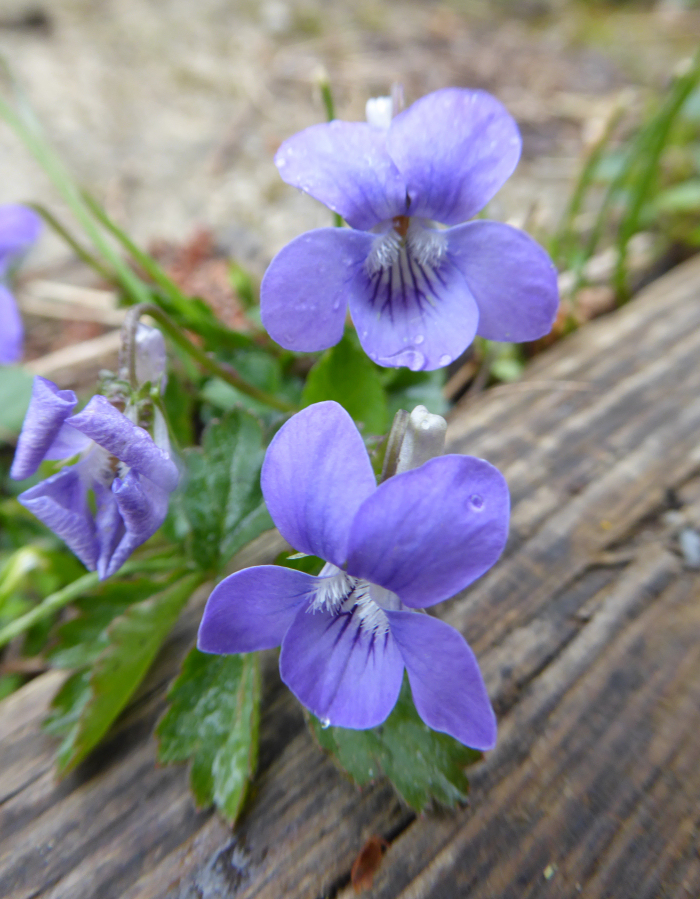


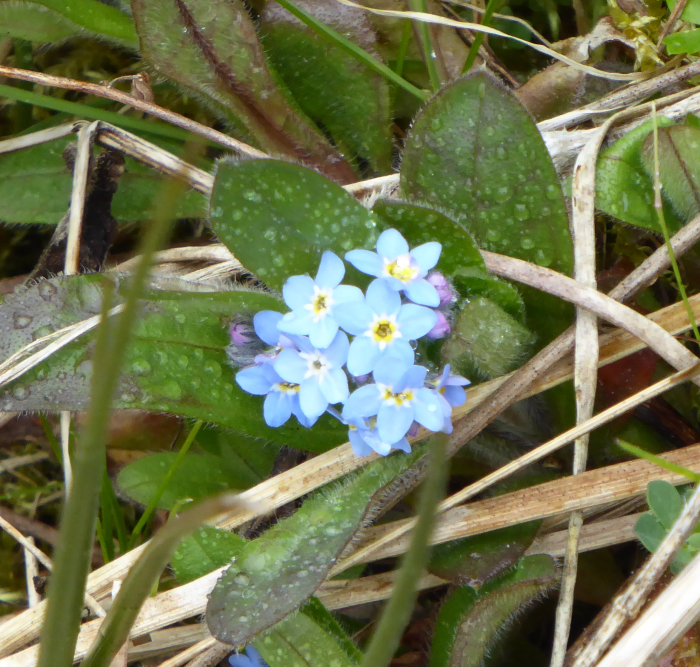

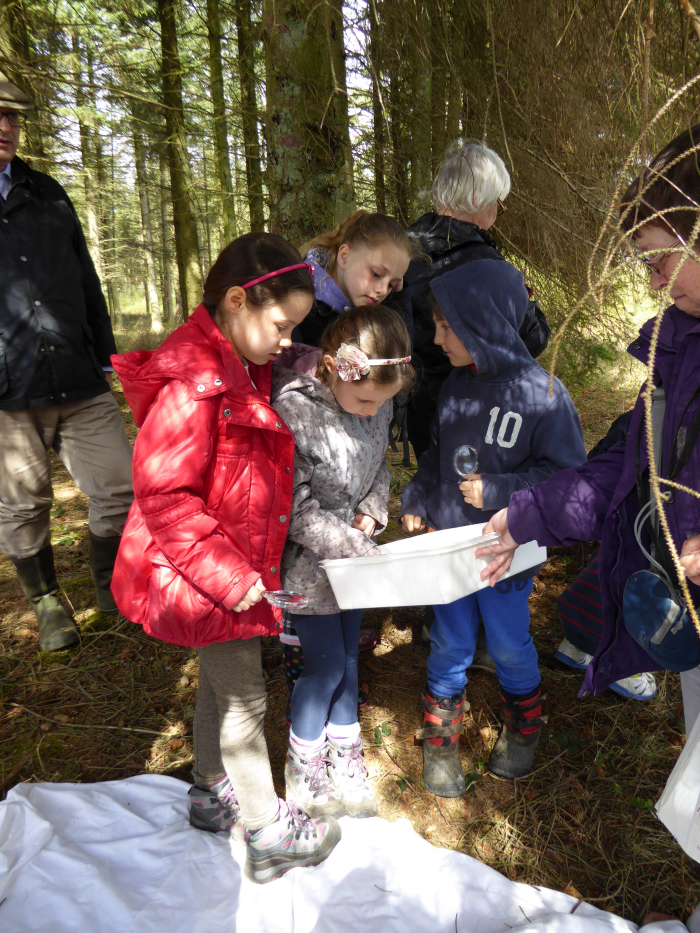


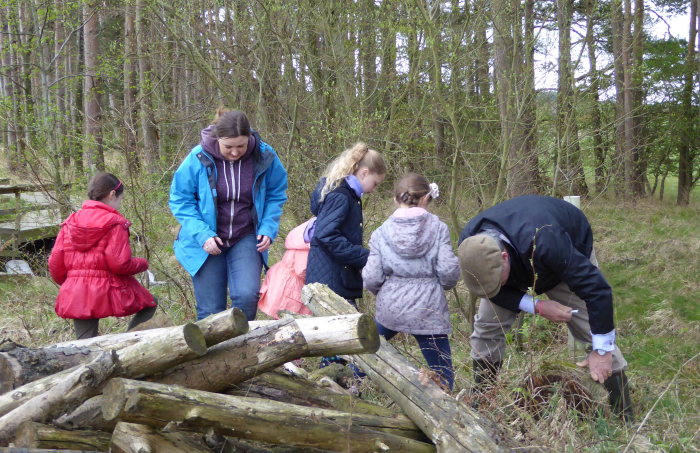









.JPG)




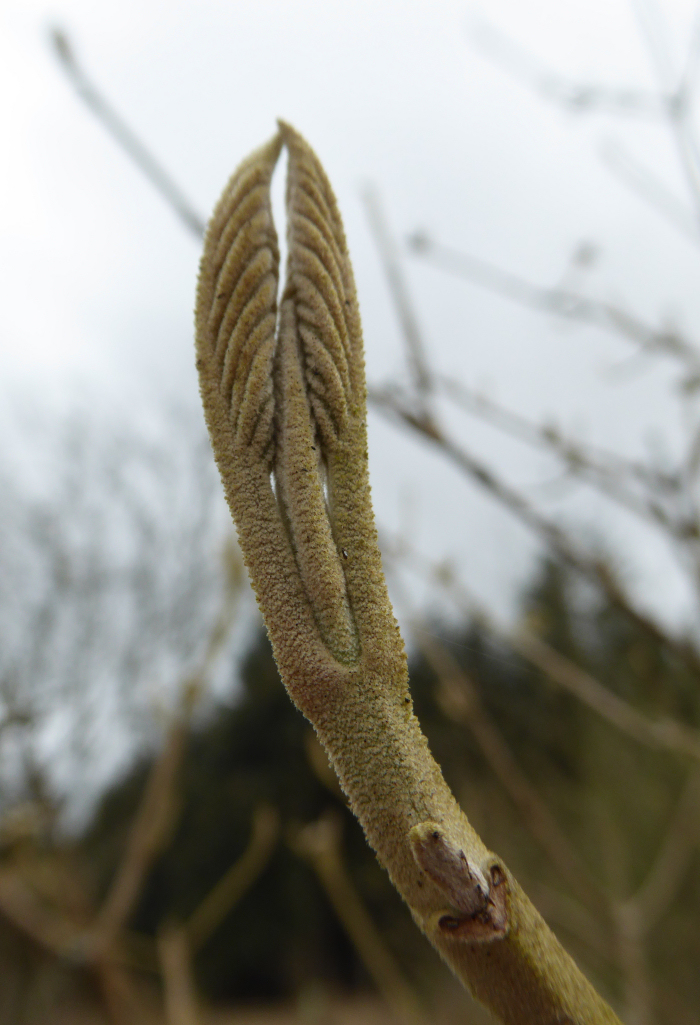
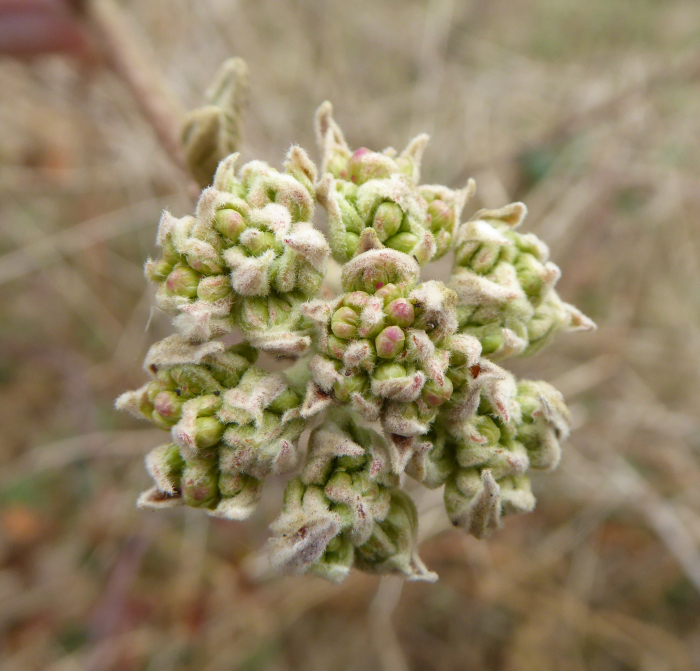

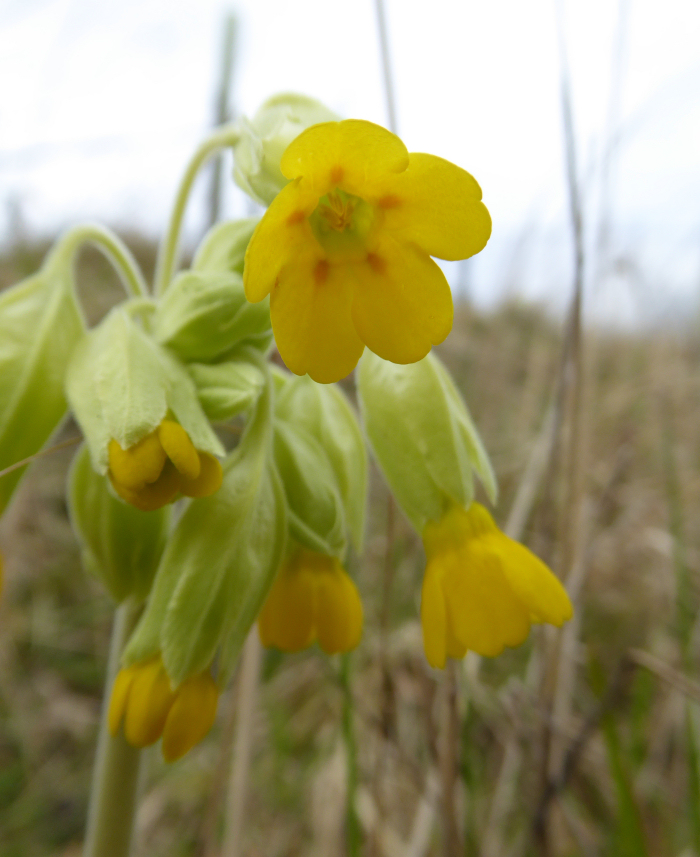



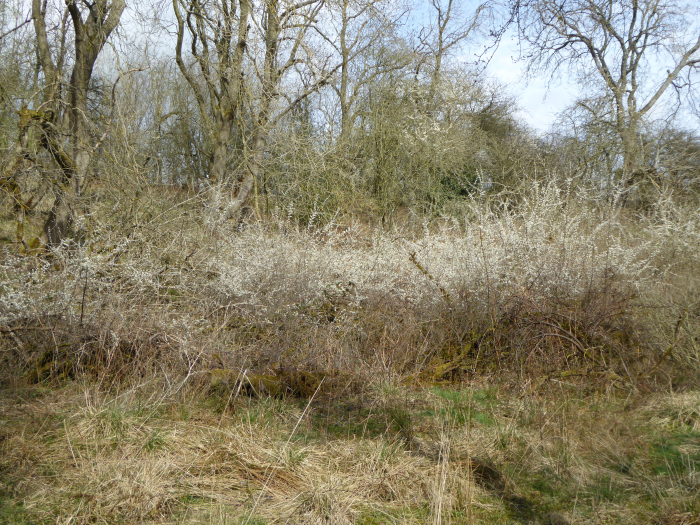






.JPG)






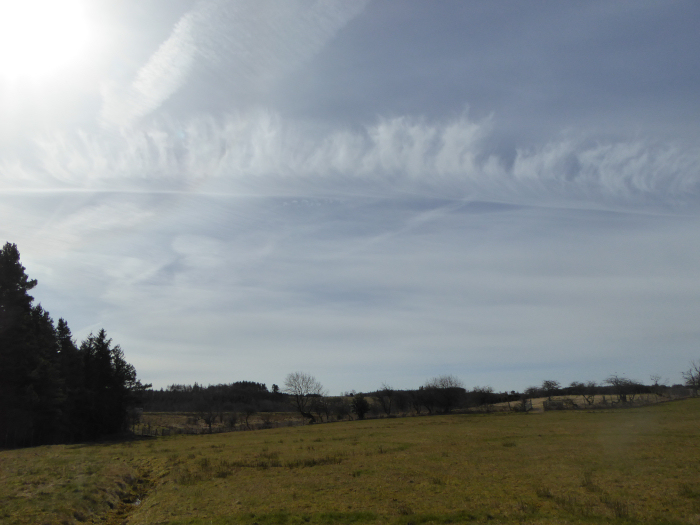
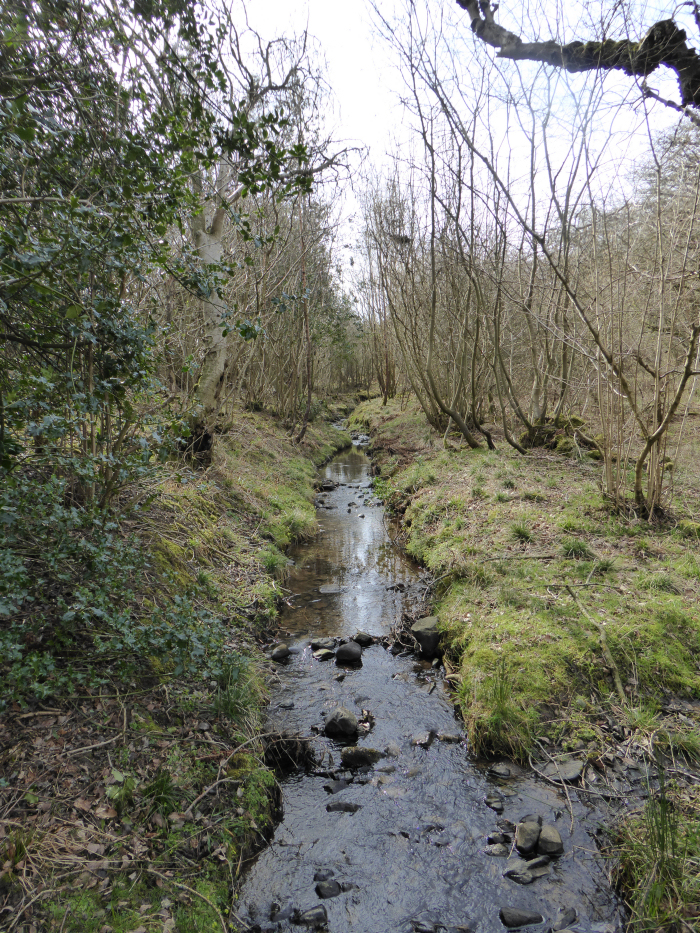
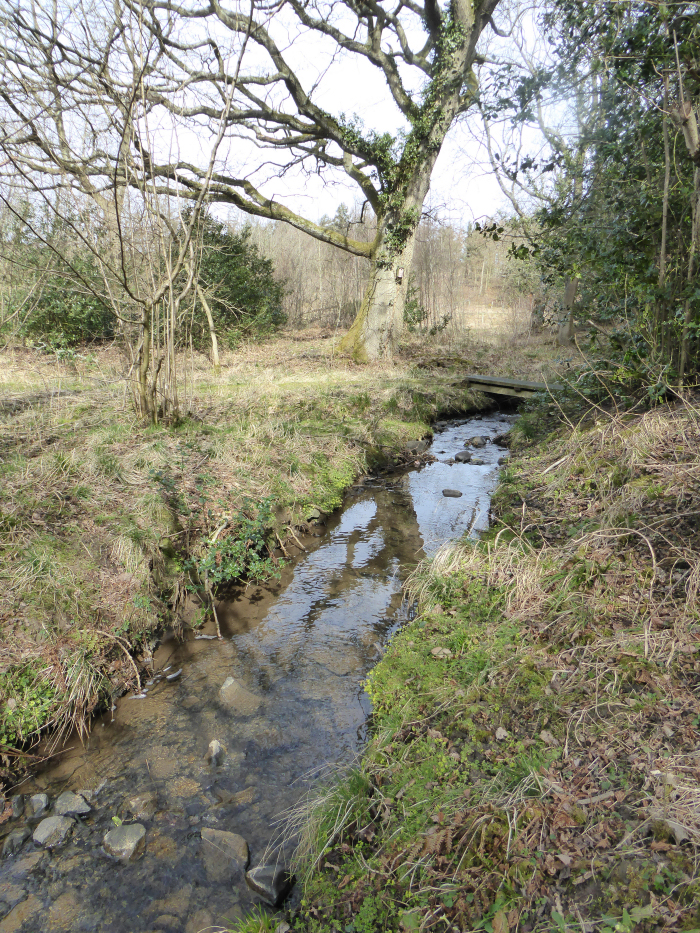
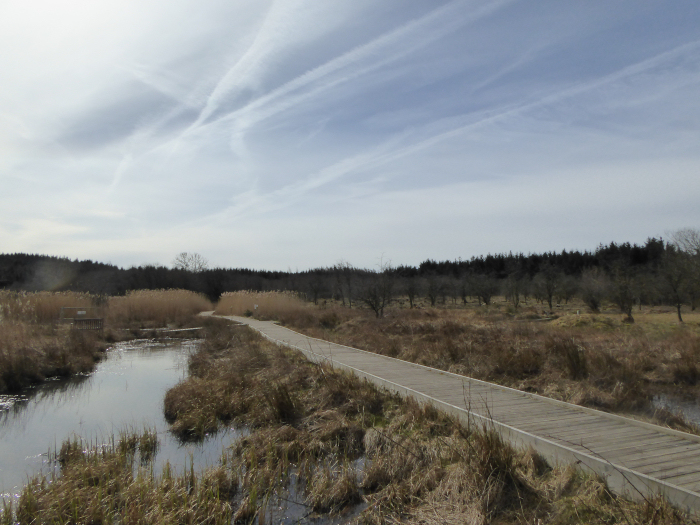

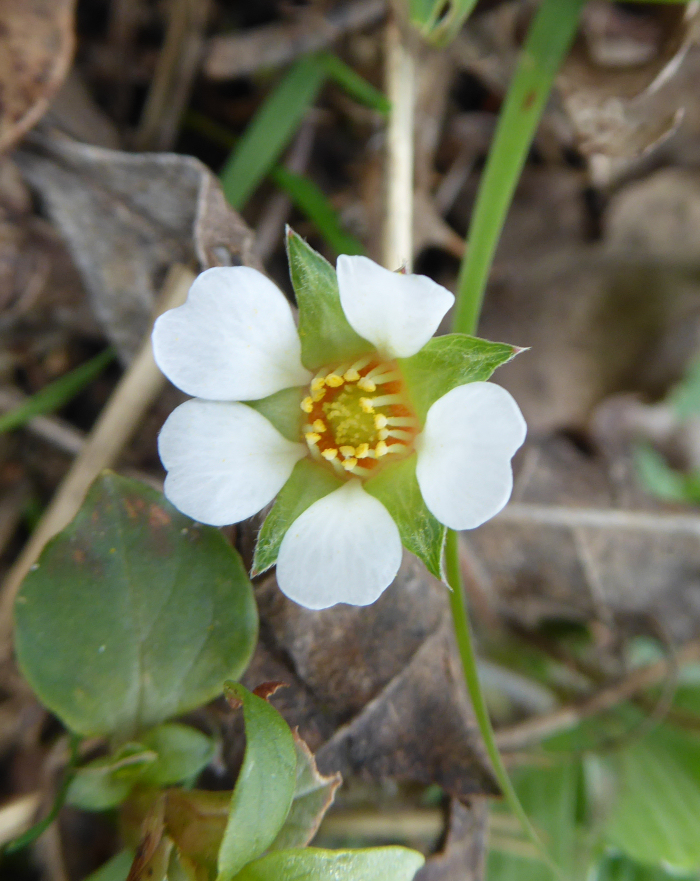
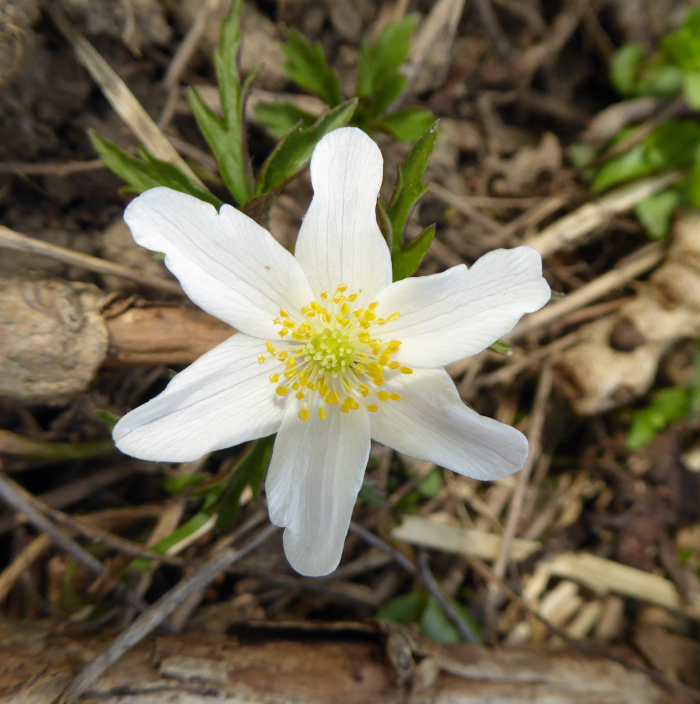












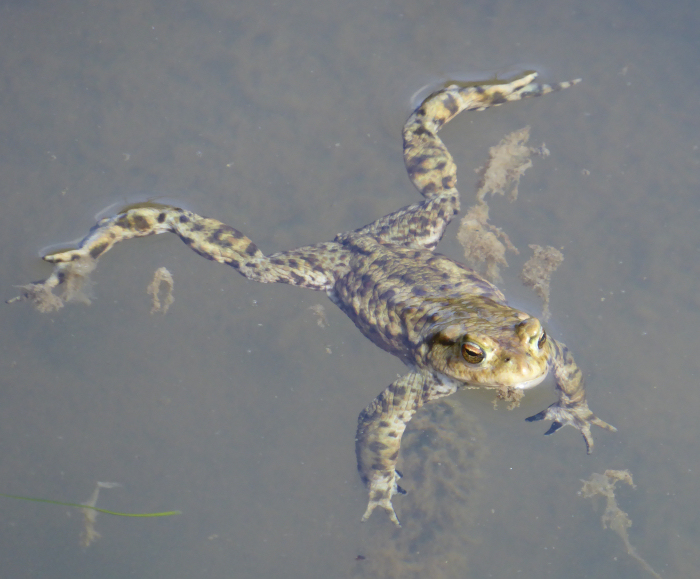
.JPG)
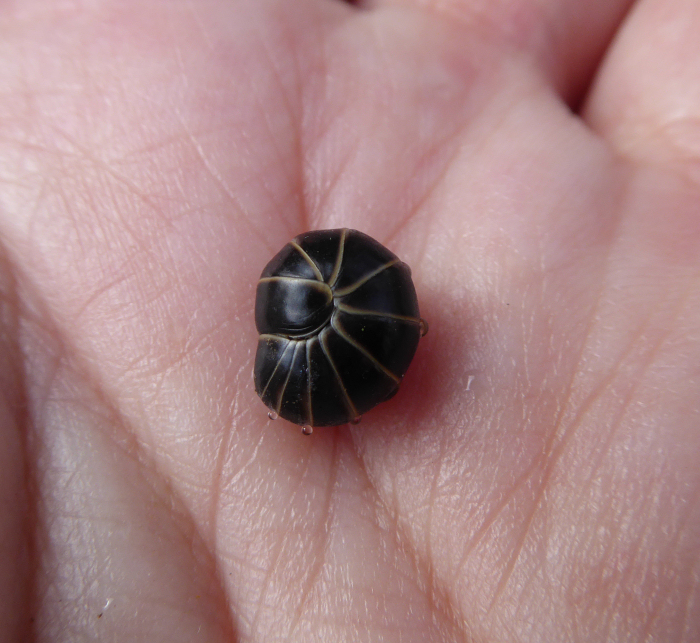

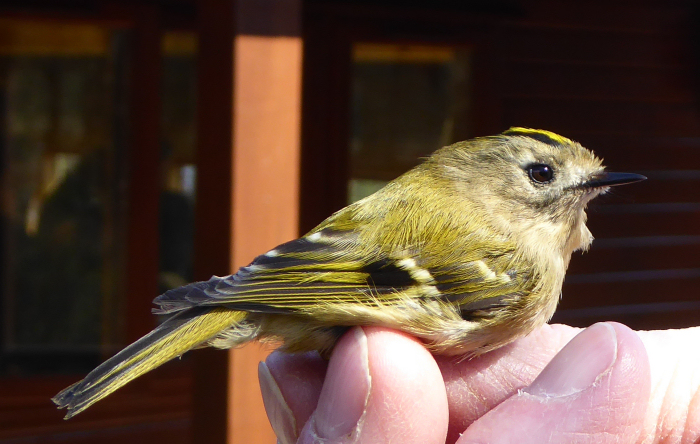
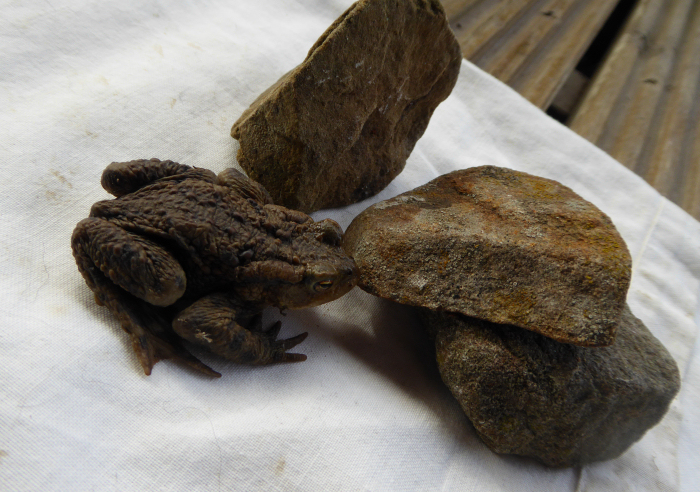



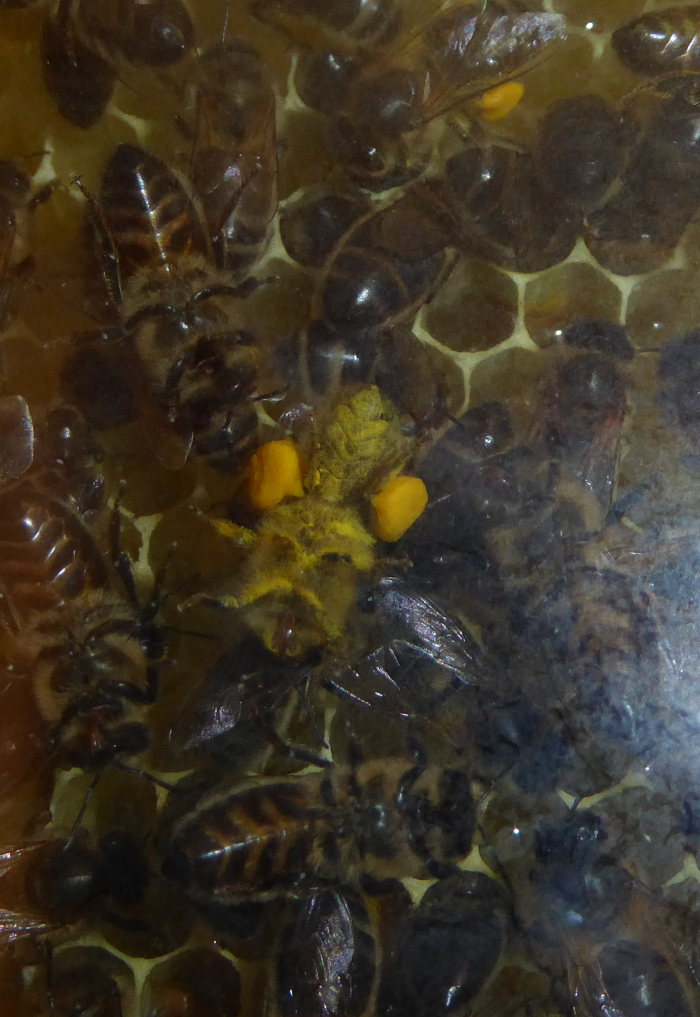











.JPG)


